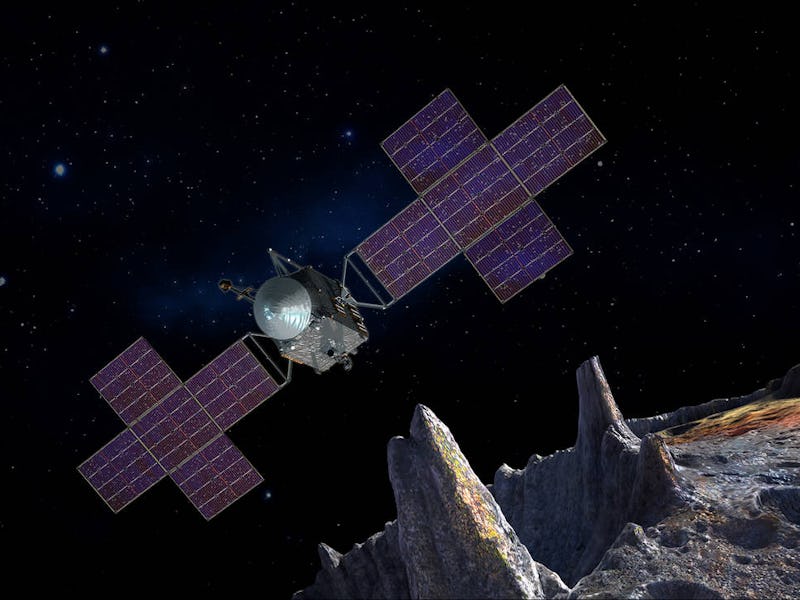NASA mission to an ancient mini-planet in our Solar System suffers major setback
NASA's Psyche mission will not launch this year.

NASA is delaying the launch of the first-ever mission to a metallic asteroid. On Friday, the space agency announced that their Psyche mission will not fly this year. The ambitious project seeks to study the cold heart of a small planetesimal that was once beating in the early Solar System.
Since the Psyche spacecraft won’t be flight-ready by October 11, the launch window for this year is closed for the mission. The next sweet spot for a launch, in 2023 and 2024, would push forward Psyche's arrival date at the asteroid by at least three years. NASA hopes the delay won’t result in too many additional expenses.
NASA leaders say they’ll decide Psyche’s next steps over the coming months.
What’s new — The Psyche team at NASA’s Jet Propulsion Laboratory in California does not have enough time to complete a full checkout of the spacecraft’s software ahead of a launch this year.
Psyche is heading to 12 Psyche, the metallic former core of a planetesimal that currently resides in the Asteroid Belt. To reach this peculiar rock, the spacecraft must travel with precision, clipping the gravitational field of Mars for a subtle course correction that slides the mission into just the right navigational path.
Travel with the Psyche mission.
“The decision to delay the launch wasn’t easy,” JPL Director Laurie Leshin says in NASA’s mission update statement, “but it is the right one.”
Leshin adds that the hundreds of people who have worked on Psyche will continue to evaluate the spacecraft’s “complex” flight software, making sure it is “thoroughly tested and assessed” before lifting into the sky.
What we don't know — It’s still uncertain how much Psyche’s next steps will cost, and how that might affect the budget for other planetary missions.
So far $717 million of the Psyche mission’s $985 million purse – which includes the rocket – have been spent. “The estimated costs involved to support each of the full range of available mission options are currently being calculated,” according to NASA.
Thomas Zurbuchen, associate administrator for NASA’s Science Mission Directorate, says in the update, “NASA takes the cost and schedule commitments of its projects and programs very seriously.” The space agency will figure out what to do next after it solicits advice from an independent team of experts “from government, academia, and industry.”
An illustration of asteroid 12 Psyche.
What’s next — A 2022 launch is no longer a possibility. If the spacecraft did fly this year, it would have reached asteroid 12 Psyche in 2026.
Now the earliest arrival is probably 2029. When planning the journey, the team takes into account the “relative orbital positions” of the asteroid and Earth. These aren’t always the same from one year to the next. If the spacecraft’s trip began this year, it would have reached 12 Psyche by 2026. Delaying the launch to next year extends the journey time, so now instead of four-year trip, getting to 12 Psyche will take six years.
Why it matters — Asteroid 12 Psyche is a special specimen. Astronomers think it was once the vibrant core of an early proto-planet, laid bare after bombardments and now drifting around the Sun among a myriad of better-understood objects.
But the Psyche mission could change that, marking humanity’s first-ever encounter with a metallic asteroid and helping scientists get direct data about the cores of rocky planets like Earth.
Scientists can only learn about our planet’s core indirectly because, as tantalizing as Jules Verne’s Journey to the Center of the Earth may be, we cannot drill a hole and send an instrument to study it. 12 Psyche offers scientists that yearned-after close look at a planetary heart.